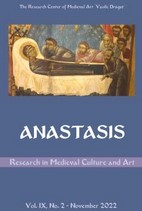The Icon of Resurrection: the Transformations in the Russian Art of the 16th-17th Centuries
The Icon of Resurrection: the Transformations in the Russian Art of the 16th-17th Centuries
Author(s): Svetlana IvanovaSubject(s): Cultural history, History of Church(es), Visual Arts, 16th Century, 17th Century, Eastern Orthodoxy, History of Art
Published by: Editura ARTES
Keywords: Easter iconography; Orthodox icon; Anastasis; Descent into Hell; Resurrection; Theatrum Biblicum; Piscator; Easter icon;
Summary/Abstract: The article deals with the problem of Easter iconography. The changes that have taken place in the Russian art of the 16th- 17th centuries are examinated. During this time, new samples for Russian icon painters have appeared. These are Western European engravings and Bibles with illustrations. The images from there are borrowed by Russian artists. This is how an engraving is copied from the cycle of illustrations of the Apostolic Creed. This creed is different from the Orthodox one. The fifth illustration includes dogma, that is not named in the Orthodox creed. There are different stages of image change. They correspond to the understanding of engraving by Russian icon painters. Firstly, the icon painters interpret the engraving and arrange the images differently from the composition of the engraving. Secondly, they create icons as an exact copy of the engraving. Finally, they create a multi-figure image with a central dominant. This new image is associated in culture with the ancient image of Anastasis, or rather, it is defined as its detailed version. Therefore, the ancient icon of Anastasis is connected with a new context. This makes it difficult both to understand the icon and the history of the "Descent into Hell" image. Only by taking into account the transformation of the icon can we talk about the meaning of the ancient image.
Journal: Anastasis Research in Medieval Culture and Art
- Issue Year: IX/2022
- Issue No: 2
- Page Range: 136-149
- Page Count: 14
- Language: English

